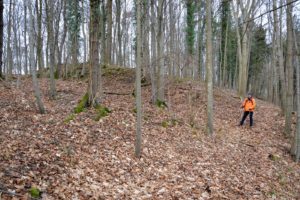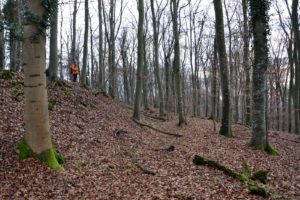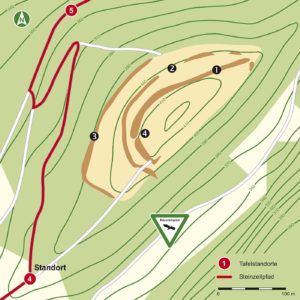4. A rampart of the Neolithic Age
Early farmers on the Ölberg
The history of the rampart, located on the top of the Ölberg, is far from being cleared. Till today archaeological excavations have not taken place. Stray finds (ceramic fragments, flint tools and a flint axe) within the rampart have been dated between 2200 and 200 before Christ; i. e. the transition from the Neolithic Age to the Bronze Age. In the Neolithic Age, the Breisgau was already densely populated with settled farmers who built houses and lived on cultivation of grain and animal husbandry.
Whereas the long-oval summit slopes gradually toward three sides and was fortified with trenches and ramparts, the steep southeast side was unfortified. On the wooded summit a staggered fortification consisting of three ramparts with upstream trenches is visible (1–3). The still existing ramparts which have partially a height of 4 m, are filled with rocks and let assume that the collapsed fortification consisted originally of high walls made of wooden beams and stones. A gap in the inner rampart allows to conclude that there was a gate (4). The whole complex has a size of 300 m x 115m and offers a surface of 0.6 hectare in the centre. From that period of time, also known as the Bell-Beaker culture, we only know few settlements and several grave findings on the Upper Rhine, e. g. in Sasbach or Wyhl am Kaiserstuhl.


